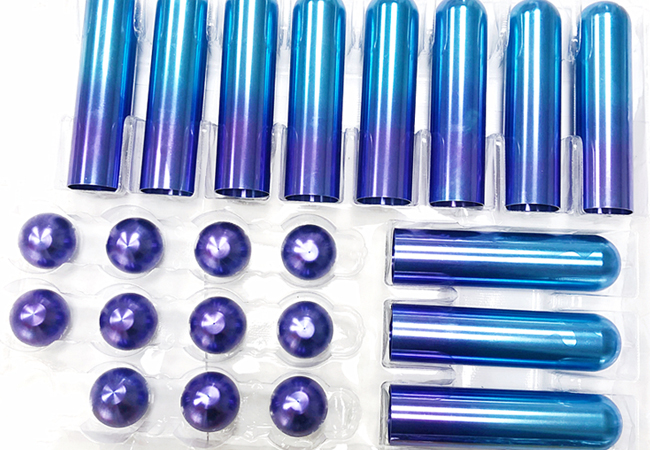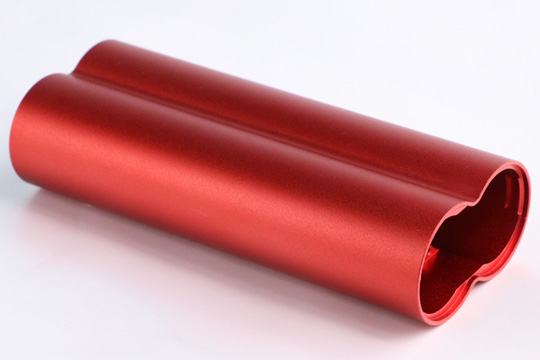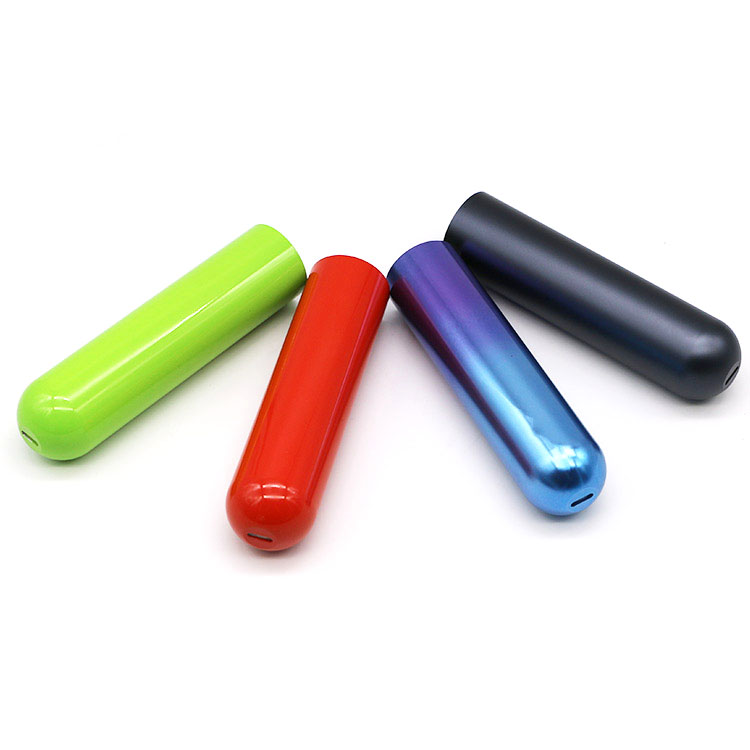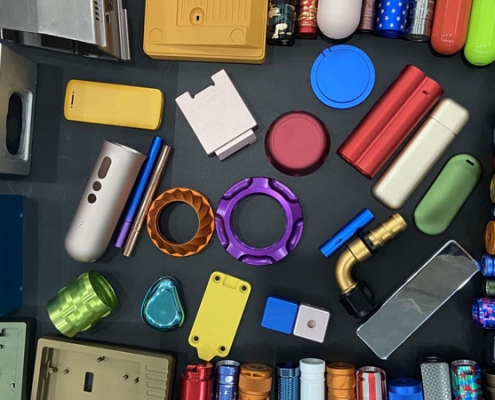Everything You Need to Know About Anodized Aluminum Colors
Regardless of the manufacturing process used, surface treatment is crucial to improving the performance and aesthetics of the parts. Anodizing, as the most popular surface treatment, can give aluminum parts a colorful coating, which not only enhances weather resistance and wear resistance, but also ensures the durability of the product. The core of this process lies in the precise control of aluminum coloring and the selection of the right anodized aluminum color, ultimately achieving a product that is both strong and beautiful.
This article will help you understand how aluminum anodizing works, the different colors of anodizing on aluminum profiles, and the types of aluminum anodizing.
How Aluminum Anodizing Works?
The process of anodizing aluminum is an electrochemical surface treatment technology designed specifically for aluminum alloys. It uses aluminum or aluminum alloy products as anodes, immerses them in a solution containing an electrolyte (such as sulfuric acid, chromic acid, oxalic acid, etc.), and forms a circuit with the cathode. When direct current passes through this circuit, the aluminum on the anode reacts with the oxygen ions in the solution to form a dense aluminum oxide film covering the metal surface.
This layer of aluminum oxide film not only increases the thickness of the material, but more importantly, gives aluminum products excellent corrosion resistance and wear resistance, thereby significantly extending the service life of the material. In addition, the anodizing process can also provide aluminum parts with a variety of colors and enhanced surface properties by controlling electrolysis conditions and subsequent treatments such as dyeing and sealing.
Colors on Anodized Aluminum Parts.
The coloring methods of anodized aluminum parts mainly include electrolytic coloring, dye coloring, overall coloring and interference coloring. Each method has its own characteristics:
Electrolytic Coloring
Electrolytic coloring is the process of electrolyzing anodized aluminum parts in an electrolyte containing metal salts (such as lead, chromium, copper, iron, cobalt, etc.) to deposit metal ions in the micropores of the oxide film, thereby forming the desired color. The type of color depends directly on the type of metal salt used , for example;
Yellow: When using lead nitrate as a colorant, a bright yellow color can be obtained.
Red: A vivid red color can be produced by combining acetate with potassium permanganate.
Green: A mixed electrolyte of copper sulfate and ammonium sulfide can produce green.
Blue: The reaction of ferric sulfate and potassium ferrocyanide produces blue.
Black: An electrolyte of cobalt acetate and ammonium sulfide is a common method for obtaining black anodized aluminum parts.
Dye Coloring
Dye coloring is a simple method where the anodized aluminum part is directly immersed in a solution containing dye .
The color range of dye coloring is very wide, covering almost all colors of the visible spectrum, such as :
Bright colors such as red, blue, green, purple, orange, pink, etc.
Softer tones such as brown, gray, beige, etc.
Color intensity is controlled by dye concentration, treatment time and temperature. To ensure uniform coloring, make sure the aluminum surface is clean and free of acid residues and transfer from the anodizing tank to the dyeing tank as quickly as possible.
Overall Coloring
Overall coloring combines the characteristics of anodizing and alloy coloring. Through the role of specific alloys in the anodizing process, aluminum parts can present a variety of colors ranging from golden bronze to deep black. This method relies on the precise control of the composition and process conditions of the aluminum parts.
The colors produced by the overall coloring process are quite special, usually showing a composite color with metallic luster, such as:
Golden Bronze: Has a mix of gold and bronze tones.
Dark Bronze: Darker in color, closer to bronze.
Interference Coloring
The colors produced by interference coloring mainly rely on the interference effect of light. Common colors include:
Blue-gray: When light interferes in the microporous structure of the anodized film, it often appears blue-gray.
Rainbow color: Under certain conditions, such as when the oxide film thickness is uneven or there is a multi-layer structure, a rainbow-like superposition of multiple colors may occur. However, it should be noted that rainbow color is not the main target color of interference coloring, but a special case that may occur.
Types of Aluminum Anodizing.
The aluminum anodizing process is divided into three types with their own characteristics based on the differences in materials, electrode configuration and voltage parameters, which are crucial for creating high-quality anodized parts. The following is an overview of the three types of anodizing:
Type I (chromic acid anodizing): Using chromic acid electrolyte, a thin oxide layer of about 0.08-0.25 microns is generated, which has good decorative properties and better heat and corrosion resistance than ordinary aluminum.
Type II (sulfuric acid anodizing): Using sulfuric acid electrolyte, the oxide layer formed is thicker (2.54-25 microns), which improves mechanical properties and enhances paint adhesion.
Type III (Hard Coat Anodizing): Using sulfuric acid electrolyte under high voltage to generate an extremely thick and hard oxide layer (25-150 microns), with high surface hardness, excellent wear and corrosion resistance, suitable for heavy parts.
In Conclusion
Anodized aluminum is essential in CNC machining, improving the strength and appearance of the product. With the advancement of CNC technology and the diversification of consumer demand, anodizing technology continues to demonstrate its advantages and add vitality to the CNC machining industry. Aluminum anodized parts have a variety of colors, which can be achieved through a variety of methods such as electrolysis, dyes, overall and interference coloring.
Start your Aluminum Anodizing Project
The anodizing process may seem complicated, but when pursuing the optimal balance between quality and cost, China VMT is your reliable partner. We have not only accumulated a good reputation in the field of CNC machining, but also demonstrated solid technical strength in aluminum anodizing services. We attach great importance to customer needs and provide personalized solutions to create maximum value for customers. When you choose Wemet, you are joining hands with a reliable partner.
Frequently Asked Questions About Anodized Aluminum
Does Anodized Aluminum Wear Out?
Anodized aluminum generally has good wear resistance, but it may still wear out after long-term use or external impact. Improving surface quality, properly selecting electrolytes and post-maintenance can reduce wear.
Will Anodized Aluminum Fade?
Anodized aluminum can fade, especially if the surface is dyed. Causes of fading include dye fading, damage to the oxide film, or process problems. To prevent fading, you can optimize dye selection, strengthen sealing treatment, and control process parameters.
Can the Anodizing Layer be Removed and Re-Anodized?
The anodized layer can be removed and re-anodized. Removal can be chemical, mechanical or electrochemical. Re-anodization requires preparation of the surface, adjustment of process parameters and possibly further treatment.







